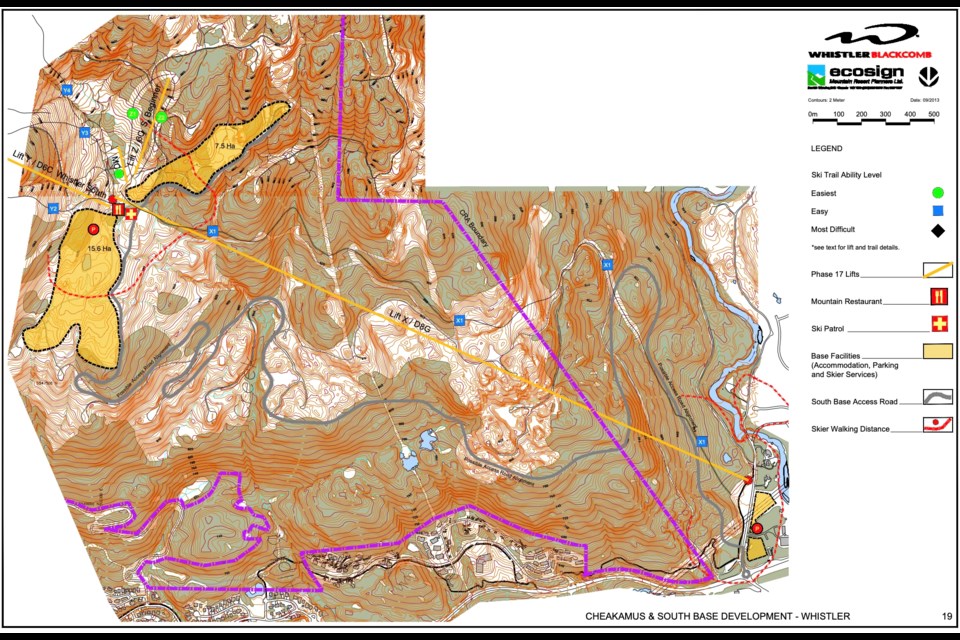Following the news of the Resort Municipality of Whistler (RMOW) striking a deal with Vail to contribute $200,000 annually to the municipality in exchange for not having to build additional parking as part of its incoming Fitzsimmons Express chairlift, a wave of debate took off on social media about the need for more parking in Whistler.
If you've ever attempted to find a parking spot after 10:30 a.m. during a long weekend, or for that matter, any powder day in the Day Lots, you’ll know it can be challenging, if not impossible, to find a place to park. This parking problem, combined with the congestion on the highway, can take hours out of the ski day and brings down the Whistler experience.
What's worrisome is that these capacity problems will likely worsen over the next two decades. Last June, the RMOW released its Balance Model report, highlighting where the resort is heading following current trends.
According to the model, a hectic future is in store for Whistler if current trends persist, with the resort’s population close to doubling by 2040, congestion on the highway expected to rise by 50 per cent, and the combined daily-equivalent population (which includes day-trippers, the workforce, and overnight guests) exceeding 50,000 people a day, up from the roughly 40,000 currently experienced at peak times of the year.
The RMOW’s then-manager of economic development and tourism recovery, Toni Metcalf, pointed out in her presentation last year that, with Lower Mainland visitors making up a sizable chunk of the resort's tourism base, as that region continues to grow, so too will Whistler's daily-equivalent population.
“On average, for every 100,000-person increase in the Lower Mainland, Whistler has seen close to 400 additional visitors staying overnight. For every 1 million additional YVR airport arrivals, Whistler has seen, on average, an additional 300 destination visitors per day,” said Metcalf.
Combating the potential added traffic congestion and associated parking problems that will come with growing visitor numbers will likely require regional transit, highway capacity upgrades and carpool incentives. However, these measures may not be enough to combat the coming wave of tourists over the coming decades, and some out-of-the-box thinking may be required.
One such idea that have garnered a fair bit of debate online is to create a park-and-ride lot in Cheakamus Crossing at the south end of Whistler. A park-and-ride would make it so day-trippers barely have to drive into Whistler before hopping on a bus into town, allowing them to skip the highway traffic crawl.
This discussion made me wonder if, instead of (or in addition to) a park-and-ride, a ski lift from Cheakamus to Whistler Mountain could be built, extending Whistler Blackcomb's infrastructure into the resort's southernmost neighbourhood.
The potential of South Whistler
As it turns out, this is not a new concept, and the idea of developing South Whistler has been around for a while. It is even featured in the current 2013 Whistler Blackcomb Master Development Agreement (although there are still no active plans to expand there now, according to Whistler Blackcomb).
The proposed Whistler South development, as laid out in the master plan, is quite extensive and includes the construction of several new lifts from the base of Cheakamus to the peak of Whistler Mountain, as well a new base day lodge with 450 parking stalls (so-called Day Lot 12), and a more extensive mid-mountain base with about 2,000 parking stalls (Day Lot 13).
A Cheakamus Crossing lift would bring many positives that could help tackle Whistler's congestion problems. From reducing highway traffic on the community corridor to spreading out the day-trippers across the resort and making the South Whistler neighbourhoods more accessible and attractive for residents.
After I wrote an opinion piece on what I wished I knew before moving to Whistler, I asked locals the same question, and by far the most liked comment read, “Don’t move to South Whistler.” A link to the mountain could help with some of that apprehension, as the most common complaint about living in the south end of town is the distance to the chairlifts and other amenities, and getting stuck in weekend traffic.
As the RMOW continues to build hundreds of units of employee housing in Cheakamus Crossing, linking the far-flung neighbourhoods of the resort municipality to the mountain makes a lot of sense. (I’d love to take a gondola and ski to work if I lived in that part of town).
I think it’s worth the RMOW, Vail Resorts and the wider community to get a broader discussion going on what South Whistler could look like in the next 10 to 20 years, especially regarding the potential parking situation as the resort continues to grow.





